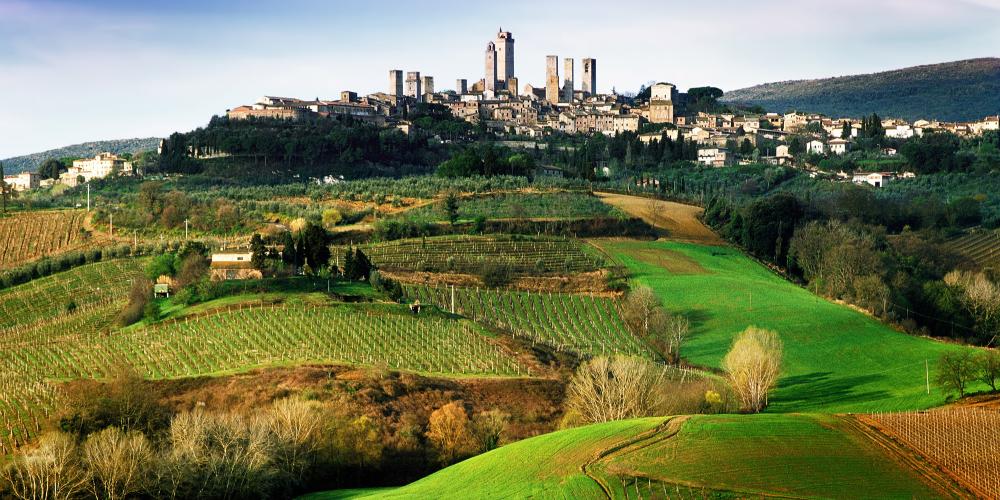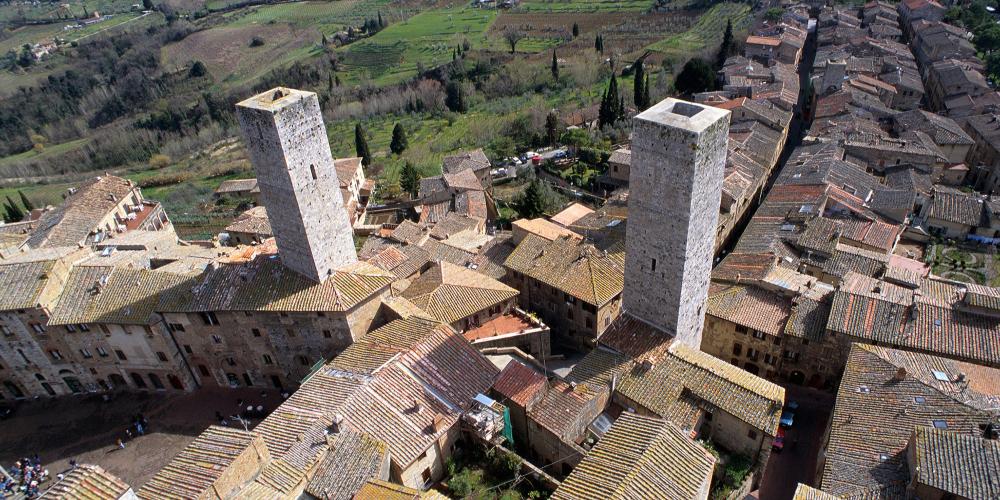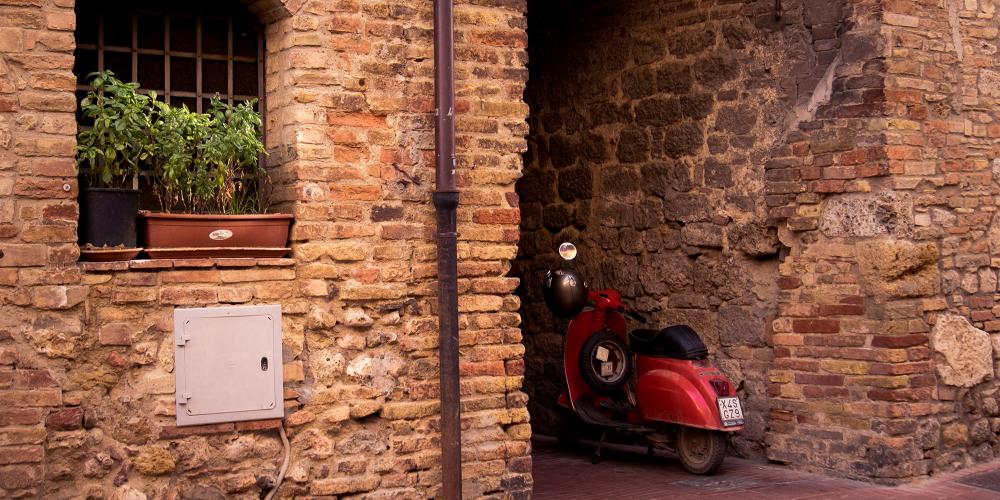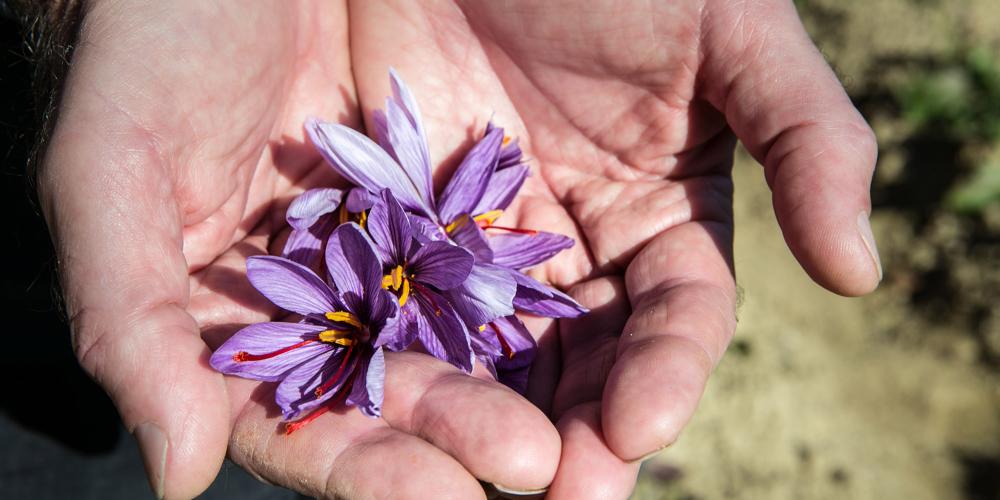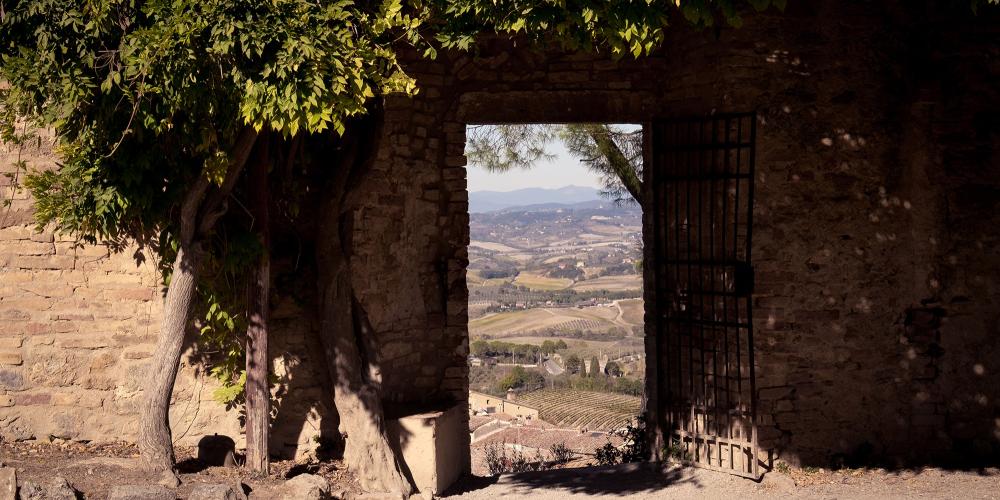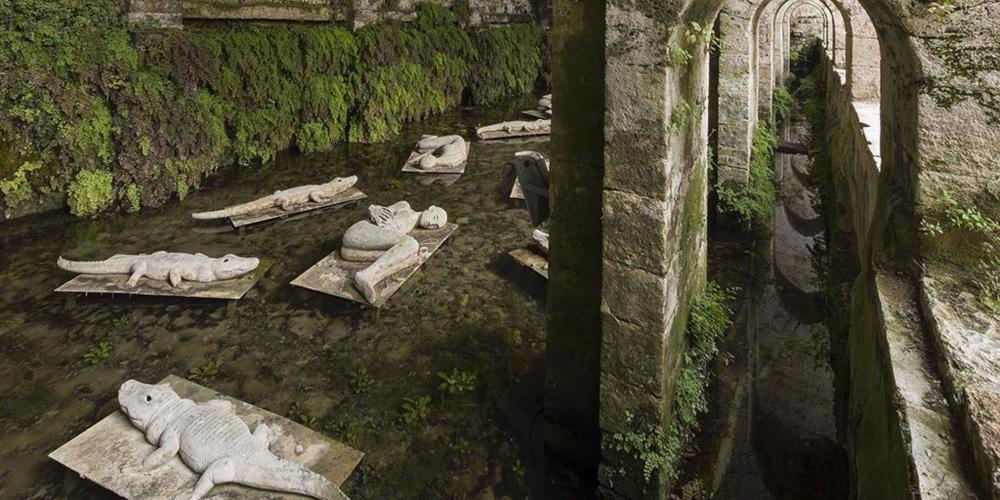Historic Centre of San Gimignano, Italy

Visitors are universally spellbound when they discover San Gimignano. The reason for this lays in the well-preserved feudal atmosphere and appearance from the Middle Ages with its architectural integrity and original intact urban layout . The towers capture the way wealth and power were displayed through dramatic public and private monuments.
The towers of San Gimignano were not just displays of wealth, they also represented the power of the families who built them. The taller the tower, the more important the owners appeared to be. This would lead to conflicts and often families would feud for decades and split the loyalties of the citizens. Legends tell stories of young lovers from quarrelling families who would meet in secret, in the shadows of the towers, like real-life Romeos and Juliets.
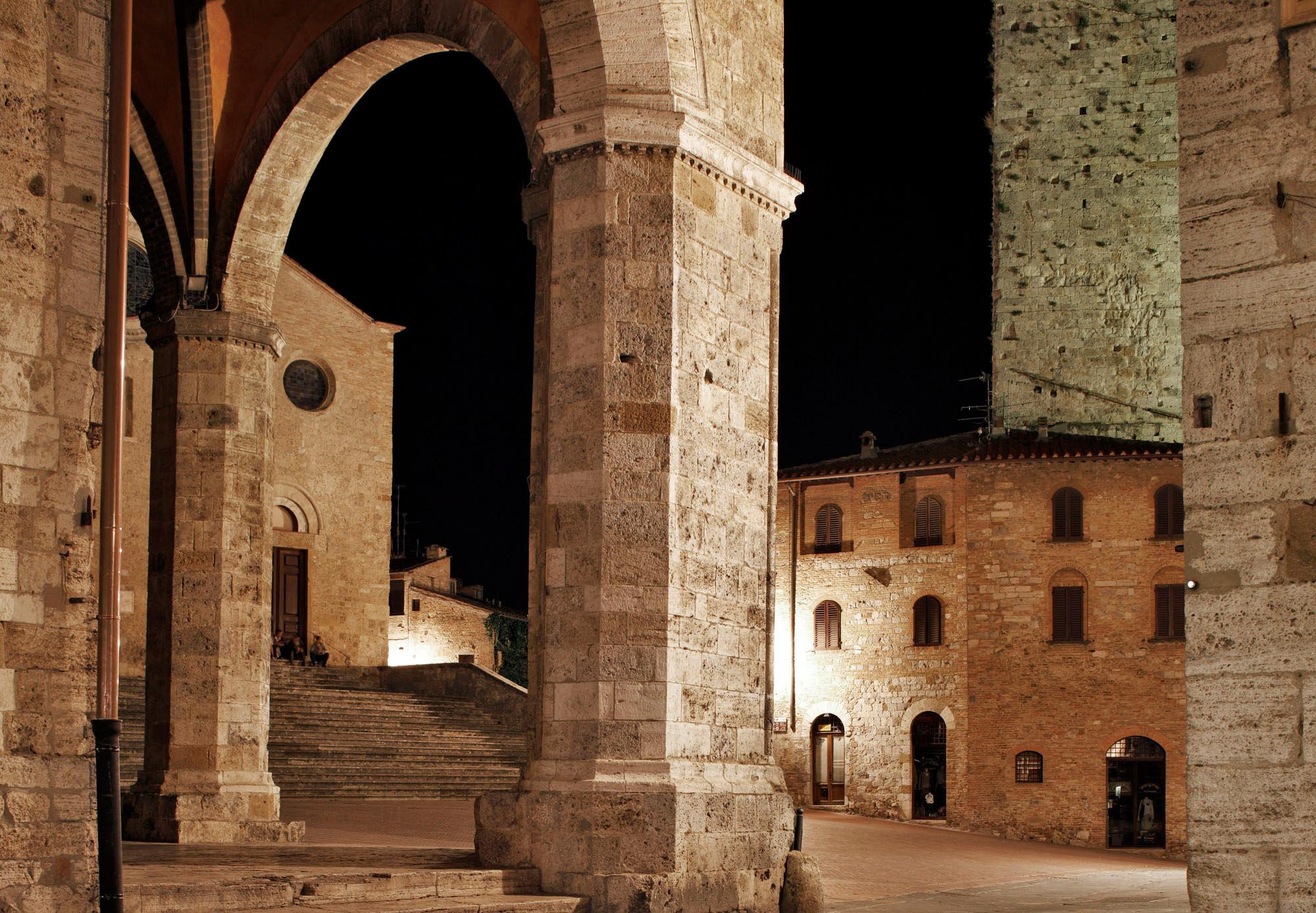
San Gimignano is easy to spot from a distance, and simply breathtaking once you enter the walls. Medieval ramparts rise from the surrounding green Tuscan farmland and provide first-time visitors with unforgettable views. Once inside, the town is easy to navigate with narrow streets leading to large squares with grand churches and palaces, and, of course, the towers—of which, 13 remain. After walking around the hamlet and climbing tower stairs, the museum explains the history and local shops offer guests local products like saffron and the region's famed white wine: the Vernaccia di San Gimignano.
Foundations of Fame
San Gimignano—originally an Etruscan and then Roman settlement—was founded on a hill, 334 meters above sea level. In time, it became a feudal domain of the bishops of Volterra and gained independence in 1199. Today, the town retains its ancient layout crossed by the pilgrim road to Rome—the Via Francigena—from north to south, from Porta San Matteo to Porta San Giovanni.

Towers of Fortune and Destiny
In the 14th century, the noble families and upper middle-class merchants began building many fortified tower houses (probably as many as 72) to show their wealth and power. At the top of the hill, two main squares—Piazza della Cisterna and Piazza del Duomo—are the centre of life here as they have been for centuries. Around these squares rise the most important buildings and the tallest towers. The Torre Rognosa is 52 meters high and stands next to the Palazzo della Podestà. The Torre Grossa, the tallest tower at 54 meters, is San Gimignano's symbol of civic power.
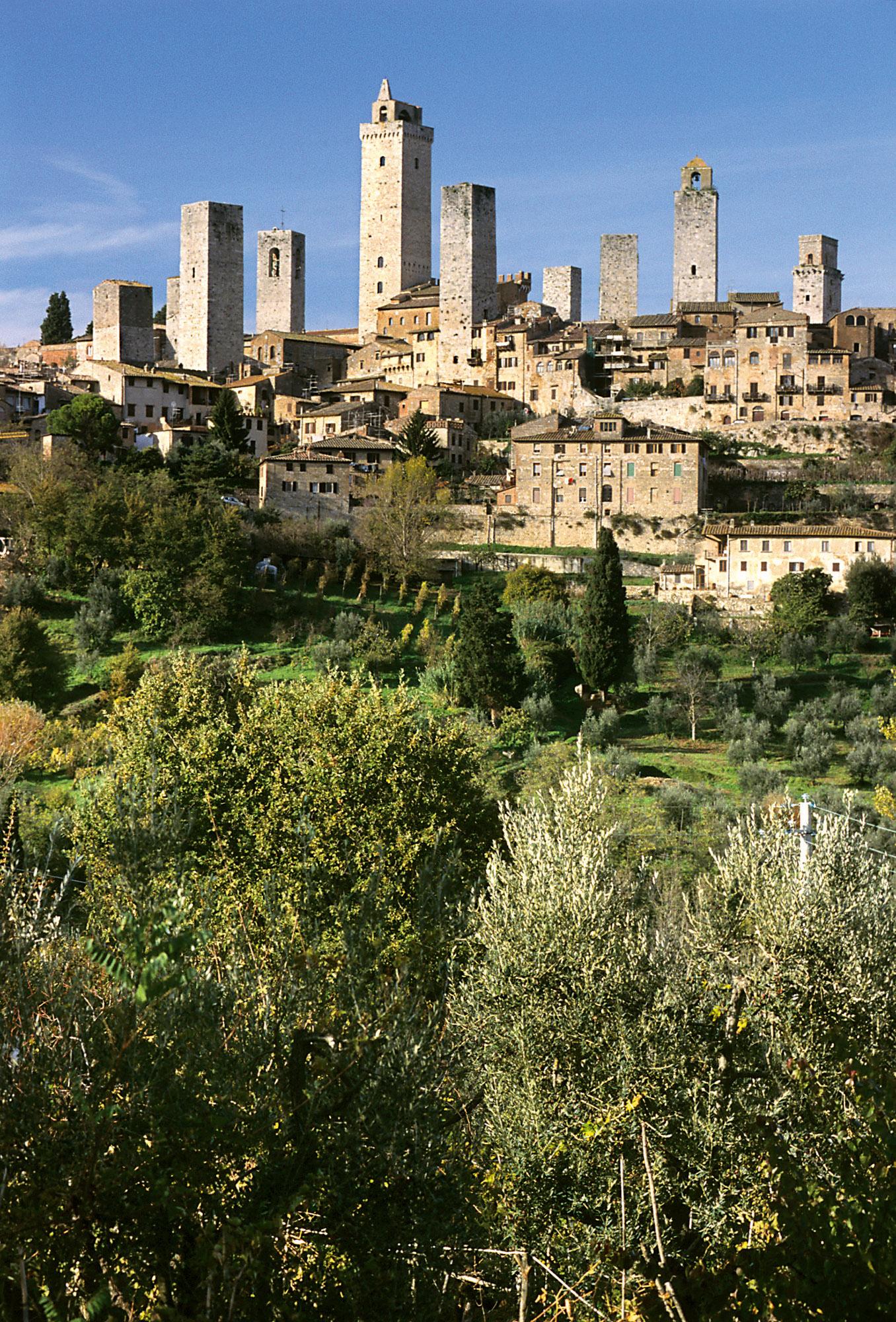
After 1353, the town underwent a period of decline due to waves of famine and plague. Within a hundred years, the town was downgraded to the level of the other lands under Florentine control. This status, however, prevented the town from the urban renewal that transformed many Italian historical towns after the Middle Ages. Later in the 18th century, San Gimignano was rediscovered by "Grand Tour" travellers.
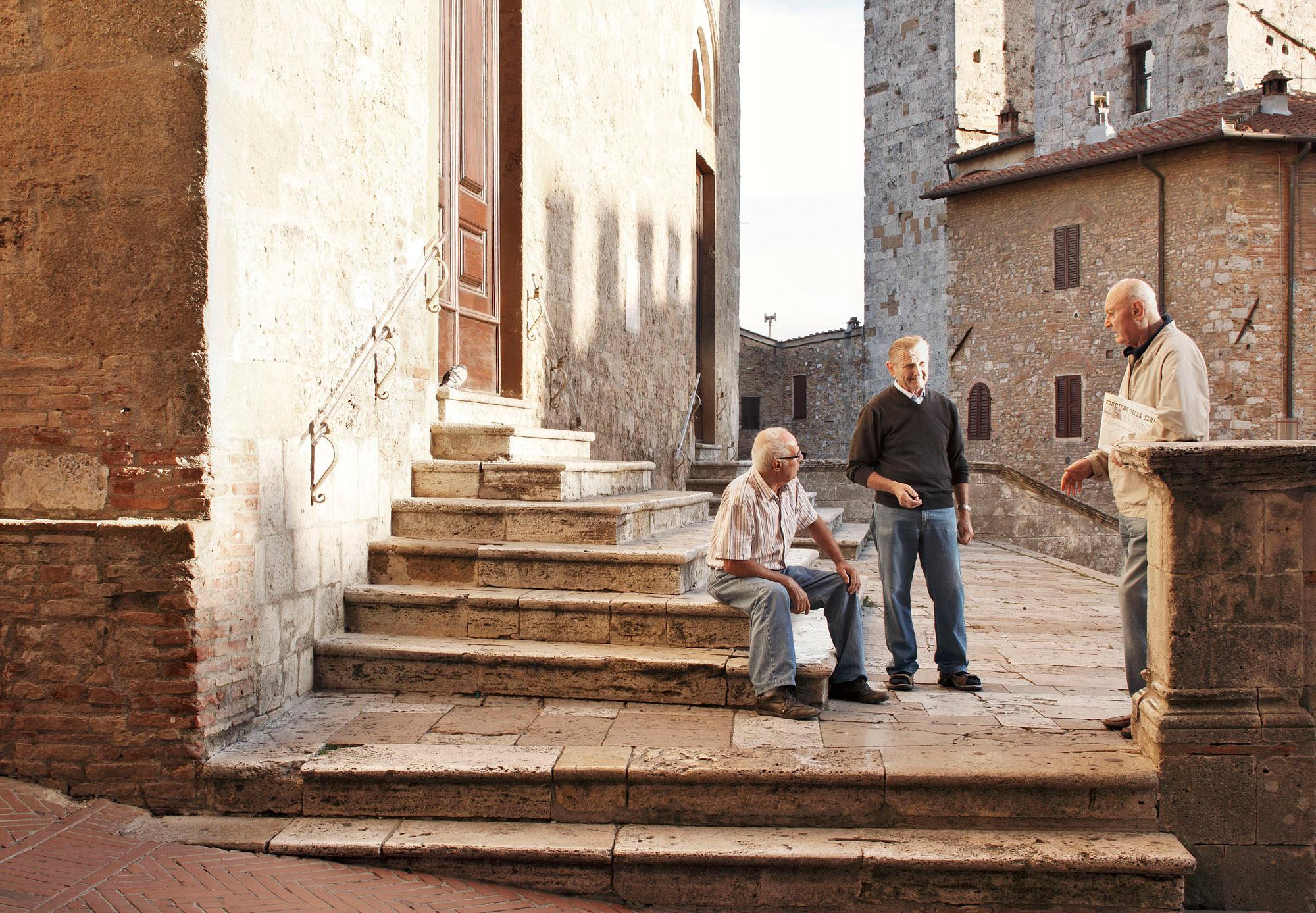
A Pastoral Canvas
San Gimignano's international reputation it not just about its architectural uniqueness. The richness and beauty of the countryside, and its precious products, are unsurpassed. The celebrated Vernaccia white wine, for instance, is produced exclusively in the area.
At the end of the 13th century, this marvellous white wine appeared throughout Europe on the tables of kings, popes, and wealthy merchants. Writers like Dante Alighieri and Boccaccio mentioned Vernaccia wine in their poems. In 1993, Vernaccia was the first white wine in Tuscany to receive DOCG certification.
How to Get There
San Gimignano is one hour by car from Florence, Pisa, and Siena. There is ample parking in town.
The nearest airports are Florence and Pisa, from which you can take a taxi or rent a car.
Take a bus or train from Florence and Siena, and by train from Pisa. The nearest train station is in Poggibonsi-San Gimignano (www.trenitalia.com). There are regular buses from Florence and Siena (www.trainspa.it).
In San Gimignano, you can rent a car with a driver. If you arrive in San Gimignano with a private bus, you will find plenty of parking.
When to Visit
There’s no bad season to visit San Gimignano, but we recommend avoiding the summer, when the historical centre can be crowded and temperatures are high. (If you come during the summer high season, please arrive before 10 a.m.,or after 5 p.m.) Spring and autumn are perfect for nice weather and fewer crowds.
Regardless of when you come, we suggest spending the afternoon in the historical centre and taking in the sunset atop the Torre Grossa.
How to Visit
We suggest visitors spend multiple days here to enjoy the historical centre and countryside. It is a good idea to hire an official guide the first day you arrive. After, spend one or two more days getting lost in the historical centre and to escape the main streets and squares. Then you should visit the countryside.
Please remember, we are in a marvellous area with cities like Volterra, Monteriggioni, Poggibonsi, Casole d’Elsa, Colle val d’Elsa, Radicondoli, and Pomarance—all of which you can easily visit by car. Take advantage of your time here. We are, after all, in Tuscany.
